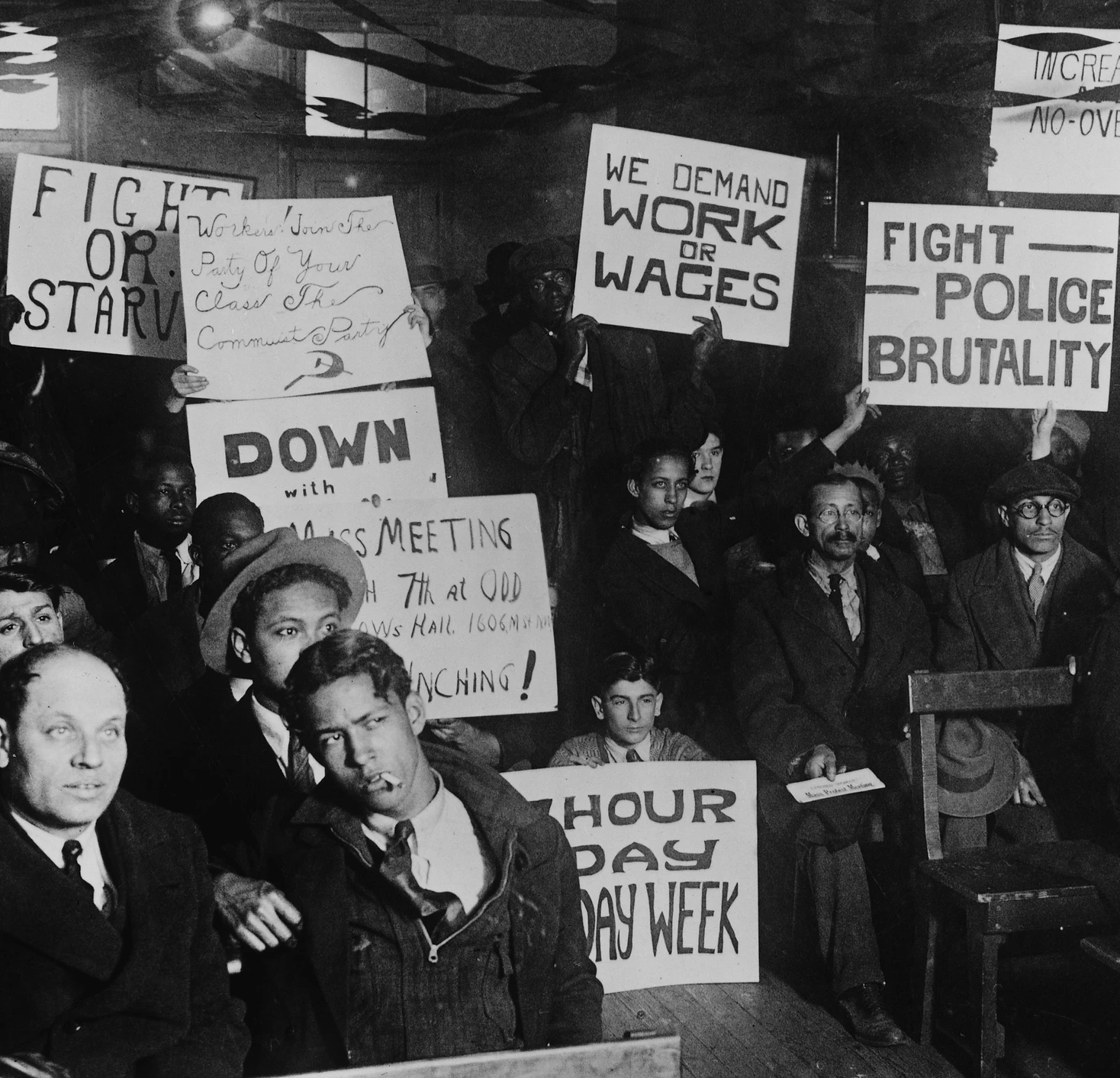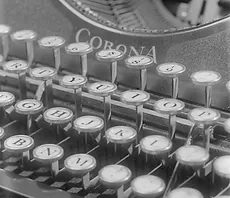Photo by Hirz/Archive Photos/Getty Images
The first large-scale demonstrations demanding action against the ravages of the Great Depression took place in cities across the country on March 6, 1930 and were organized by the American Communist Party. This photograph captures a gathering in Washington, D.C. preparing for a demonstration in front of the White House the next day.
The multitude of signs reveal the confluence of issues that brought the Communist Party and Black activists together in the early 1930s, but the pairing was not without tensions. The Party initially treated police brutality and lynching as merely class issues. Early Black activists forced the Party to change its approach.
For Black workers, there could be no separation between the struggle for economic justice and freedom from police and mob brutality; they were one and the same.





One of the earliest Black socialists in the U.S., George Washington Woodbey, linked the two in 1905: “In the days of chattel slavery the masters had a patrol force to keep the negroes in their place and protect the interests of the masters. Today the capitalists use the police for the same purpose.” Black activists like Woodbey and those in this image pushed the Party to be far more radical on racial issues, turning it into arguably the most active multiracial organization in the fight against police brutality at the time.
Police violence and racism were longstanding issues, even in 1930.
In Chicago, for example, African Americans were 3 percent of the city’s population but 21 percent of police homicide victims from 1910 to 1920. Many of those killed were shot to keep them from fleeing and one in ten were innocent bystanders killed when police fired into crowds. Black newspapers regularly featured “Police Blotters” instead of “Crime Blotters” documenting instances of police brutality.
The Communist Party took up the struggle against police brutality both as a class-based appeal to Black workers and as one of its specific demands for worker safety.
The Party was at the vanguard of demanding protections for workers, of which exploited Black laborers were especially in need, but Black activists linked these fights to the racial violence they faced from mobs too.
The placard, partially obscured in this photo, calling for a meeting March 7 at Odd Fellows Hall was likely in response to the lynching of Laura Wood in North Carolina. Killed for supposedly stealing a ham, she was the third Black person publicly and ritualistically murdered by a mob that year. At least twenty were lynched in 1930 alone. Through protests like this, the Party started to realize that lynching was being used as a tool to divide the working class from one another.

Without addressing lynching and police brutality alongside demands for reasonable hours, fair pay, and unemployment benefits, the Party had limited appeal to most African Americans. Would-be Black members had to demand that the Party not soft-pedal the battle for racial equality and physical safety.
The year after this photograph was taken, the Party solidified its standing among African Americans when it took up the appeal of nine Black teenagers who had been wrongfully convicted of raping two white women in Scottsboro, AL. Black membership in the Party boomed as the Party made this clear miscarriage of justice and attempted legal lynching into a cause célèbre.
But the March 6, 1930 protest in front of the White House came to be a proving ground for the later Scottsboro case as the Party saw how many would turn out to protest economic and safety issues. Police wielding tear gas and clubs violently drove out some 100 protesters including those in this image, but their fight continued.
Membership in the Communist Party decreased during the Red Scare of the 1940s and 1950s, but the multitude of issues seen in this photo never disappeared. We remember Martin Luther King Jr.’s “dream” of racial reconciliation on the National Mall in 1963, but we often forget his call in the same speech for “an immediate end to police brutality” and that people that day marched for both “jobs and freedom.”

Listen to the author:
Learn More:
Jeffrey S. Adler, “Shoot to Kill: The Use of Deadly Force by the Chicago Police, 1875-1920,” The Journal of Interdisciplinary History, V 38 no. 2 (Autumn 2007): 233-254.
Paul Heideman, Class Struggle and the Color Line: American Socialism and the Race Questions 1900-1930 (2018).
Robin Kelley, Hammer and Hoe: Alabama Communists during the Great Depression (1990)
Clarence Taylor, Fight the Power: African Americans and the Long History of Police Brutality in New York (2018).
J.A. Zumoff, “The American Communist Party and the ‘Negro Question’ from the Founding of the Party to the Fourth Congress of the Communist International,” Journal for the Study of Radicalism (2012).
YouTube footage of protest: https://www.youtube.com/watch?v=0Mljp0bzMWo





